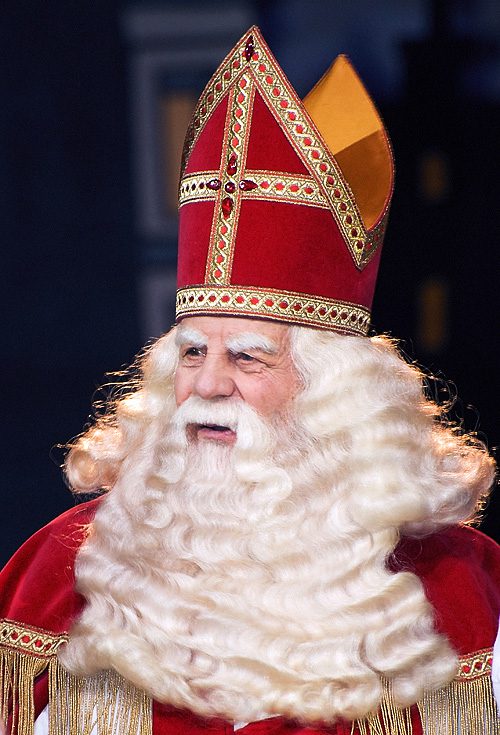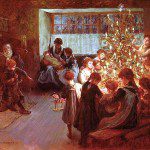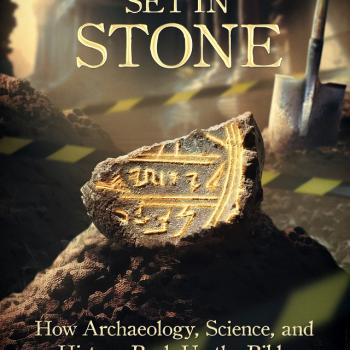
Since when have heartwarming fairy-tales been considered “lies”? I think this is a remarkably imagination-challenged mentality: all this business of anti-Santa Claus.
Since many fantasies and stories and fairy tales are wonderfully instructive and cultivate the imagination, I don’t see how anyone can say they are lying. They’re examples of fiction. A belief like Santa Claus is simply a means to make them feel that some of the wonderful fantasies actually come true. If the parents control these things so that only good stories of benevolence and caring and love are allowed, then I see no problem with this whatsoever.
What is Santa Claus if not (in one sense) just a small piece of heaven, for the wondrous period of childhood? After all, in heaven many of our deepest longings come true and we are totally fulfilled. So what is wrong about bringing that “world” to a child in a more tangible way?
I think to be against that is to have a mind that is “imaginatively stunted” (for lack of a better term). We don’t need to stifle imagination and fantasy; we need to cultivate a healthy Christian sense of them. This is what brought C. S. Lewis to Christianity. He loved fantasy and mythology; then he discovered (with a nudge from Tolkien) that Christianity was the true myth.
Now, with Santa Claus, the truths conveyed are “true” in the sense that great mythology is “true”. It strikes a chord deep within the soul, of a world where such things can take place. Children are still capable of believing that it is possible. I see this as a little slice of heaven. Children are closer to heaven in a sense because they haven’t been in this world long enough to become jaded or to lose faith.
In my opinion, to call this sort of thing a “lie” entirely misses the point. I think one either intuitively “gets it” or they do not, and discussion about it is fairly futile, in terms of changing anyone’s opinion.
It’s not a “lie” to encourage children’s imagination. It’s known that young children blur reality and fantasy to a great extent anyway. For them, most of what they see is quite real. So it’s up to parents to choose to teach positive or negative things.
Myths (even something like Aesop’s Fables) often teach the deepest truths about life and right and wrong, but they do it in a way that’s different from historical narrative: by using symbols and fictional characters. But what lies behind all that is profound truth and wisdom.
The Bible itself does this to some extent. Aspects of the Adam and Eve story are likely allegorical. There may not have been an actual tree, or forbidden fruit, etc. It was illustrating the principles of obedience to God and it’s converse: rebellion. But they were real people: the first human beings, and they did indeed fall (original sin).
This is what the story is showing, whether every last detail was “historical fact” or not. The book of Revelation has symbols and allegories (which has made it historically difficult to interpret in many ways). Jesus’ parables were not literally historical accounts but they conveyed deep moral truths about human nature and behavior.
Finally, I would note that Santa Claus (as we know him, and the entire phenomenon) was largely a Protestant development, because of the antipathy to veneration of the saints; so it became secularized (for better or ill) to what we see today, whereas in the Catholic and Orthodox traditions (and to a lesser extent, Anglican) there was no problem with venerating (honoring) real persons in history, including St. Nicholas.
For related reading, see my poem about St. Nicholas.
***
(abridgment and slight revision of an article from 2-16-07)
Photo credit: Sinterklaas, as portrayed in the Netherlands, 2007 [Wikimedia Commons / Creative Commons Attribution-Share Alike 3.0 Unported license]
***













